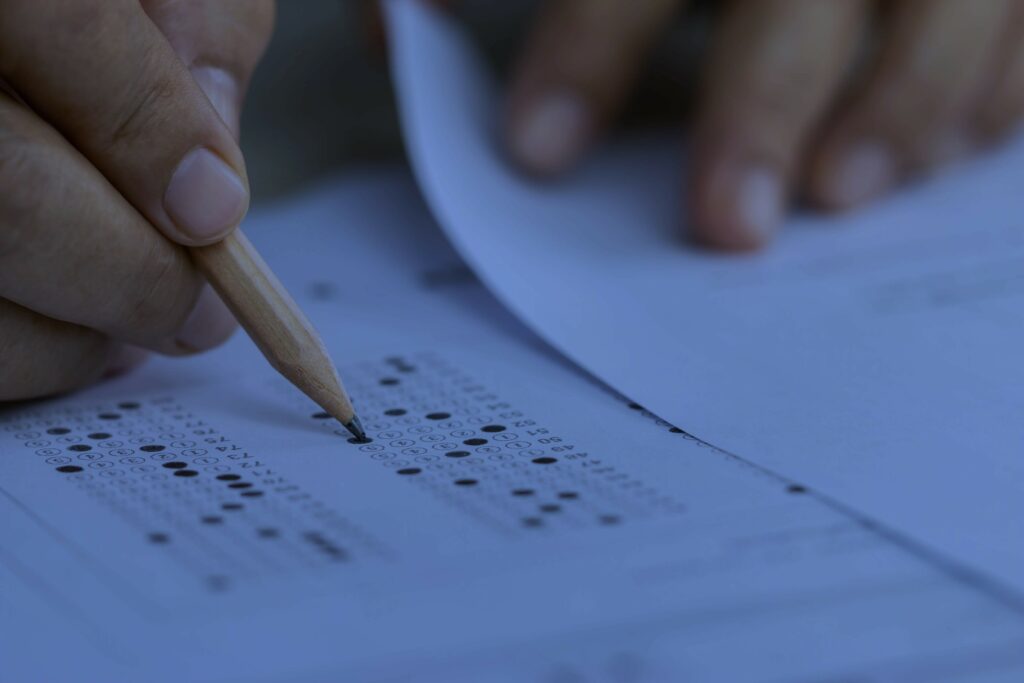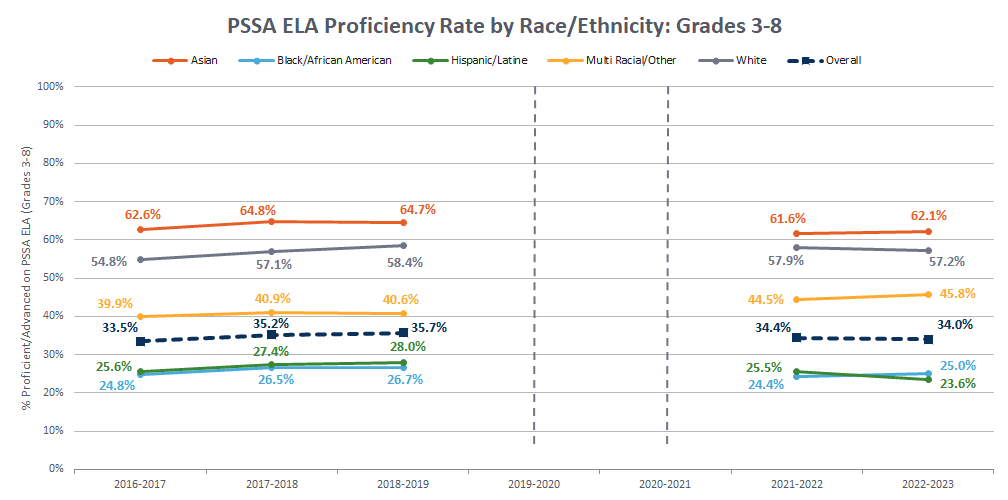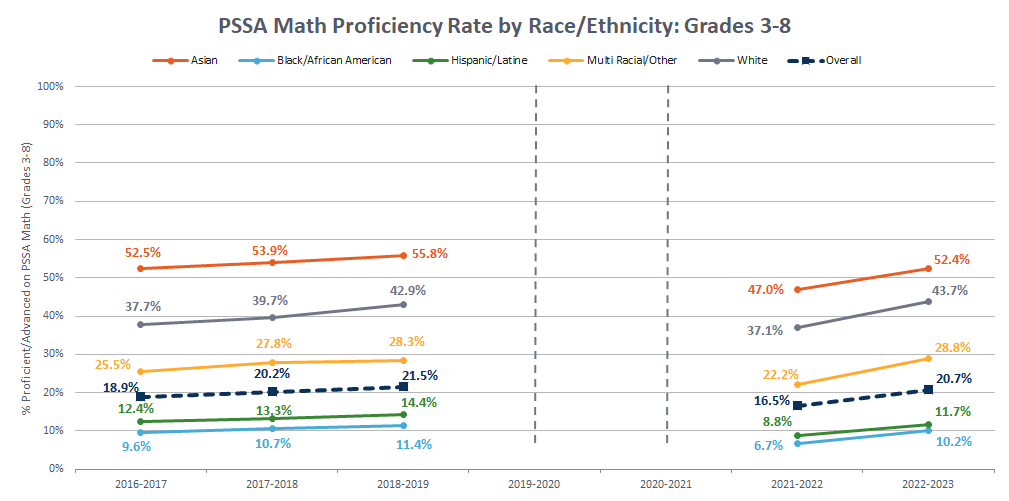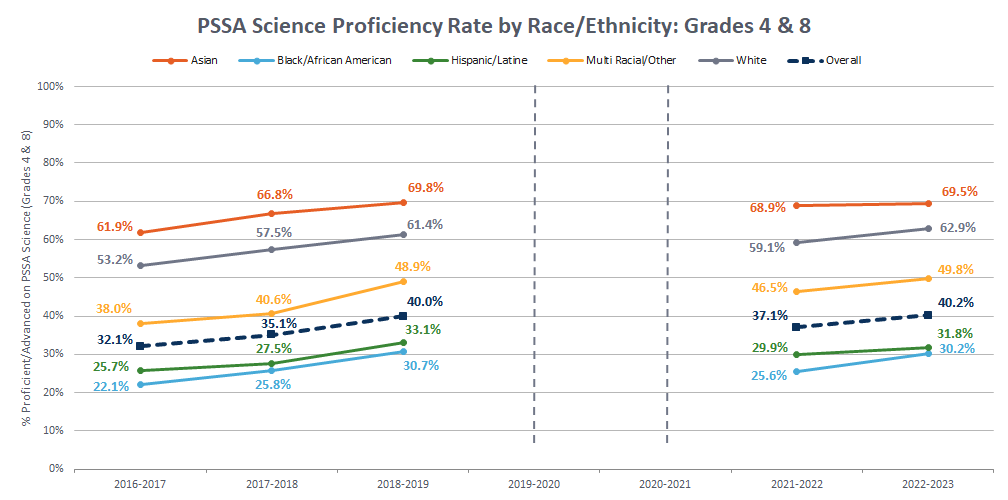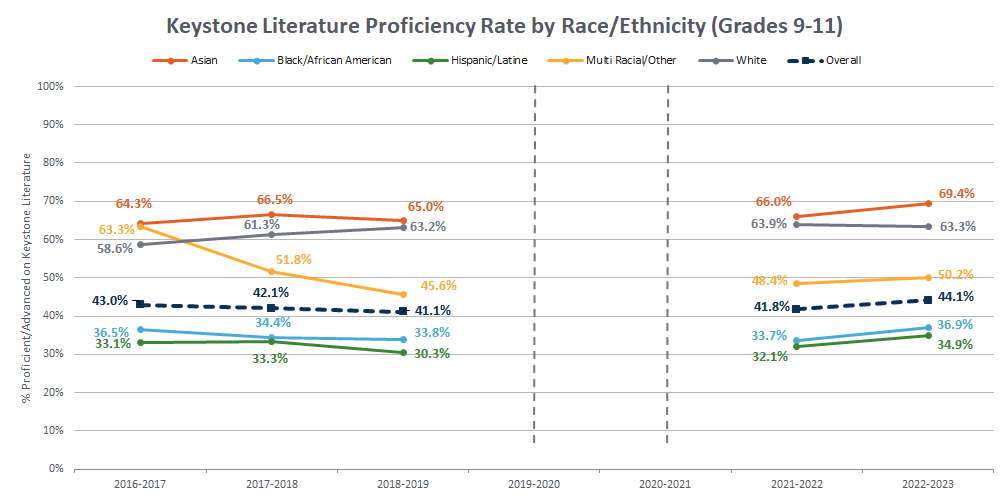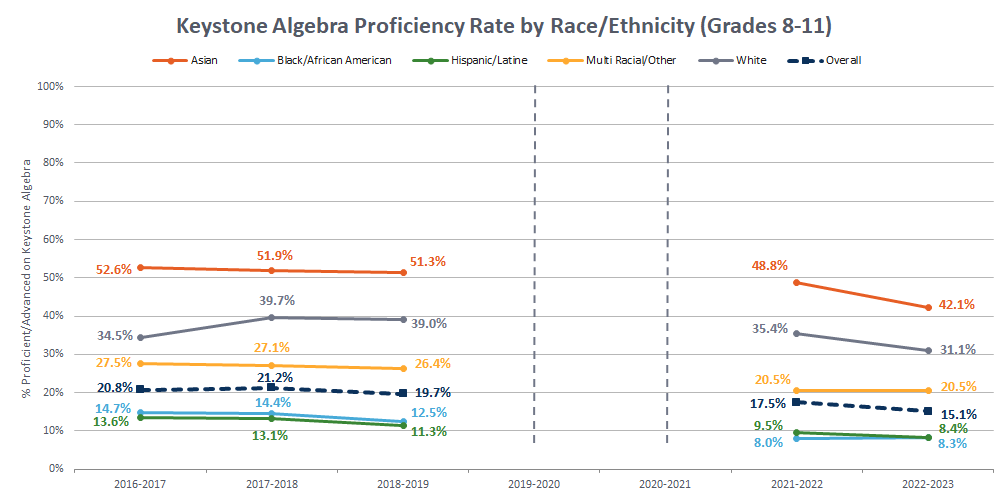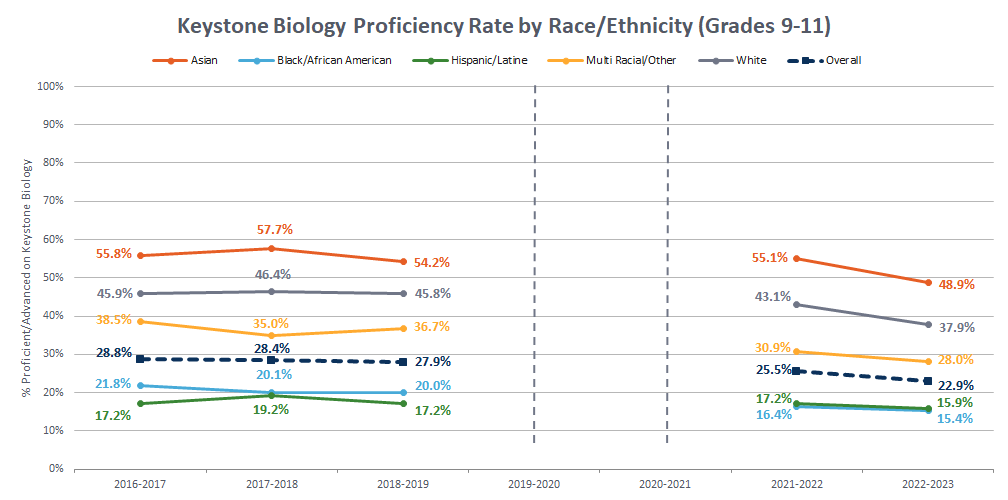The Pennsylvania Department of Education (PDE) requires Pennsylvania public school students to take two types of standardized assessments: the Pennsylvania System of School Assessment (PSSA) in grades 3-8, and the Keystone exams in grades 8-11 upon completion of specific courses.
PSSAs are secure, in-person standardized tests, and results are used for accountability purposes. Students in grades 3-8 are tested in English Language Arts (ELA) and Math, and students in grades 4 and 8 are also tested in Science. In spring 2023, 47,635 of 49,844 eligible School District of Philadelphia (SDP) students in grades 3-8 participated in the Pennsylvania System of School Assessment (PSSA) in ELA and 48,380 of 49,785 eligible students in grades 3-8 participated in PSSA Math.1
The Keystone exams are capstone tests for core courses in Literature, Algebra I, and Biology, typically taken by students in grades 8-11 during the same year they complete the associated course; however, students can repeat an exam if desired. For accountability and reporting, PDE uses the highest Keystone score received by the end of grade 11, known as “Best by 11th.” In 2023, 9,169 SDP students across grades 9-11 took the Literature Keystone, 16,121 students in grades 8-11 took the Algebra I Keystone, and 10,580 students in grades 9-11 took the Biology Keystone.
On November 8, 2023 PDE published the results of the state standardized tests administered in the 2022-23 school year. Statewide results show mixed results for ELA, with improvement from 2022 for 3rd grade but declines for 7th and 8th grades. PSSA math and science scores improved over 2022 for all grades across Pennsylvania. Although proficiency rates for SDP students are lower than statewide rates, SDP students’ year-over-year results align with the statewide results; we see overall signs of post-pandemic improvement, especially in grades 3-8 math and science.
